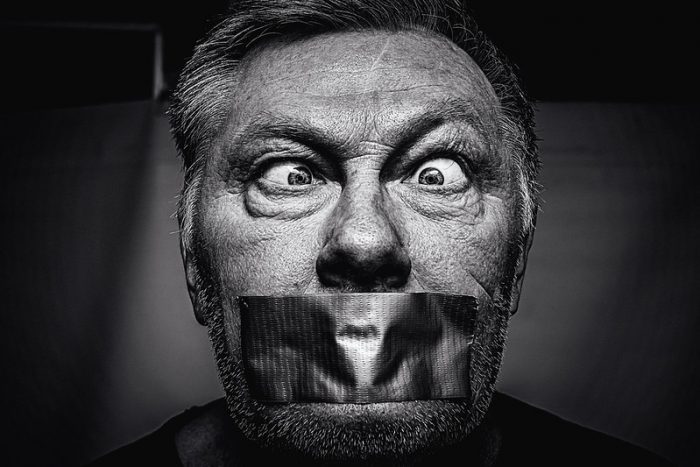Could mouth taping be right for you?
It seems odd to consider taping your mouth closed at night, but the benefits of avoiding mouth breathing are extensive. If you suffer from dental problems or excessive mouth breathing, mouth taping could save you a lot of strife.
I recently received an email from a patient and trustworthy friend who shared the positive effect mouth taping at night has had on his dental hygiene. While this is a somewhat controversial technique, his story speaks volumes:
“I started mouth taping because I was frustrated with a lifetime of cavities, and I was just told I had nine more. Again, more cavities.
I use a simple light tape that costs two dollars and lasts for months. I use only a small, postage stamp size and it’s always there in the morning. Today, I went back to the dentist for my first cleaning and checkup since starting mouth taping; I was told I had zero cavities. She also said, ‘I can tell mouth breathers by their gums. You have none of the signs of a mouth breather.’
Mouth taping may seem strange, but it clearly works.”
Do you ever wake up with a dry mouth? If so, this is a good indicator that you are sleeping with your mouth open; known as mouth breathing, an open mouth dries out the gums and teeth and dehydrates oral mucosa. This lowers the mouth’s pH and allows for the proliferation of acid and plaque-forming bacteria, like Streptococcus mutans.
Streptococcus mutans can increase four-fold for mouth breathers compared to nose breathers and has been linked to bad breath, dental cavities, gingivitis, dental plaque, snoring, allergies, asthma, sleep apnea, arterial plaque, heart health, brain plaque, and cognitive decline.
The risk of mouth breathing is more considerable for children. Keeping the mouth closed while sleeping is necessary for proper facial development, including a wide palate and open airways. One study linked 85 percent of mouth breathing in children to improper facial development and smaller airways, creating an unhealthy cycle of ongoing mouth breathing just to get enough air.
Science Backs Up Ancient Wisdom
In James Nester’s book, Breath, he writes about George Catlin, a researcher and artist, who painted some 600 portraits of Native Americans before any Westernization and observed and reported on their health. In his 1962 book, The Breath of Life, Catlin describes mothers training their infants to keep their mouths closed when not eating and to tuck their chins while sleeping to prevent mouth breathing. This is something I also saw in India when I was researching nose breathing for my first book, Body, Mind, and Sport.
Today, volumes of science tell us mouth breathing changes the environment of the mouth by breaking down the mouth’s protective barrier, the gums. When the gums weaken, retract, or bleed, the plaque-forming bacteria Streptococcus mutans finds its way into the bloodstream through the gums, where it deposits plaque in the body’s arteries. This can increase the risk of stroke and heart concerns, as well as a buildup of plaque in the brain, increasing the risk of cognitive decline.
Learn How to Mouth Tape
Contrary to what most of us envision when we say mouth tape—suffocating underneath a huge piece of duct tape—a small piece of flexible, surgical tape works great. I use 3M Transpore Surgical Tape, which is about the width of Scotch tape.
Apply the tape vertically, a small piece from just above the upper lip (under the nose) to just below the lower lip (maybe halfway down the chin). Taping in this way allows you to breathe through the sides of the mouth if needed during the night. Over time, it gets easier and easier and less tape is needed.
Have you tried taping your mouth closed at night? What have you noticed?
~












Read 1 comment and reply